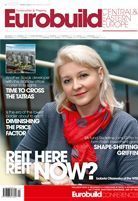Troy Javaher, managing director, Lincoln Europe: There are a number of differences. First, AIG/Lincoln was primarily a development-oriented company when it entered the CEE region in 1997. Lincoln started 51 years ago as developer, and has since developed over 13 mln sqm of commercial space and over 209,000 multi-family residential units. When Lincoln brought AIG out to partner us in the region, the focus was predominantly on development, and less on investment properties. Now the reverse is the case, with the vast majority of the focus on investment (80 pct), and pure development making up a far smaller part. Lincoln still prides itself as one of the top active developers in the US, but it also recognises that the development landscape in the CEE region has changed significantly since the mid-2000s, with more regional/international developers present and highly accomplished local groups producing top quality projects and which have successfully achieved sc































































